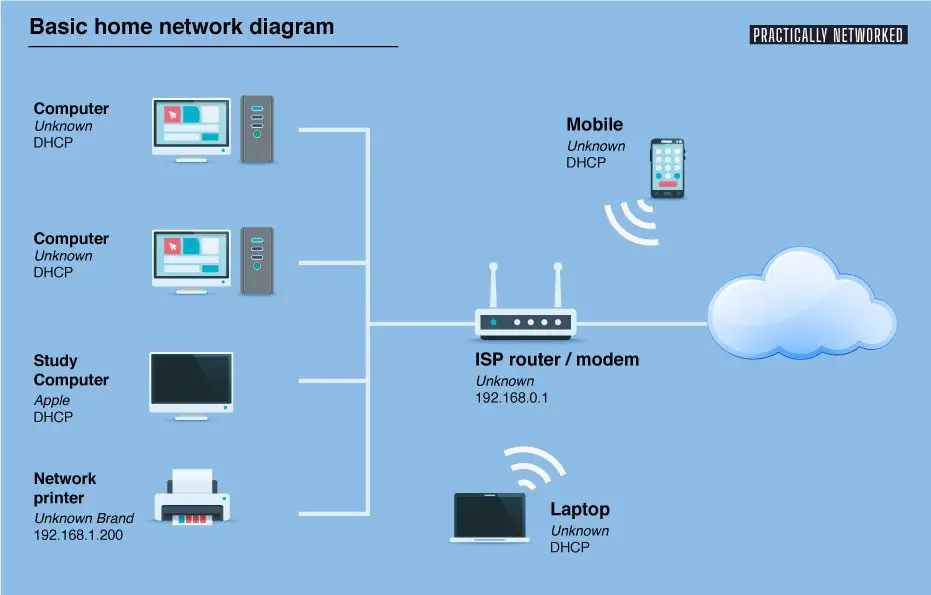Those of you who are familiar with cloud solutions and new-age digital transformations must also be familiar with Christopher Gustafson. As a transformative cloud leader, he aims to empower everyone to harness the power of the internet at all levels.
Here are his thoughts on how a home network diagram can enable home internet users to optimize it to their best advantage. The wireless router market alone is expected to reach USD 13.94 billion in 2023. However, how do you know which system to follow for creating the most efficient network in your home or office? How do you set up and install the routers and access points?
Chris Gustafson is a pioneer in his field, and his insights have helped thousands of users worldwide to use the internet in the best possible way.
Interview
The interview with Mr. Gustafson follows, and his insights are most valuable.
Q: Hello Mr. Gustafson! Thank you so much for your time. So, without wasting any more of it, let us start with what is a home network diagram to begin with.
A: Thank you for having me. First, to get down to it, let me just say that most users do not even know there is such a thing as a home network diagram. And hence, they never realize that they need it.
Simply put, a home network diagram is a drawing or a layout of your home network. This is especially important for those who use the internet heavily for their home use or small business.
The diagram lets you plan your network before you set out to install all the components. And a lot depends on the type of network you choose to opt for. As we all know, there are various kinds of them.
So there is PAN or Personal Area Network or LAN, a Local Area Network. Users could opt for a Wireless Local Area Network, WLAN, Wide Area Network, or WLAN.
There are several others. Your internet service provider will be able to tell you about the networks you offer, and then you take it from there.
Q: Why is the Home Network Diagram important?
A: As I said earlier, this home network diagram benefits those who use the internet widely throughout the house, in their home office, or in small businesses. So, you start with the modem and the router. Then, you extend the network using access points and cables.
Once you have an idea of the bandwidth you would consume because of your work or gaming requirements, you can decide whether you want wireless access points or would rather opt for Ethernet ports.
How many devices are going to be connected? What kind of work are you going to do? Is it going to involve a lot of streaming or videos? What kind of routers are you going to set up to handle that kind of data traffic?
Your home network diagram will take all these factors into account.
Q: So, should everyone have a home network diagram when they opt for an internet service?
A: Not really. You do not need to draw a home network diagram if you just have one PC connected to the router and sit right next to it. However, if you have multiple devices and almost all of them require heavy bandwidth, then a network diagram can help you distribute the load eventually.
By using QoS, you can determine which device gets priority. Knowing home network diagrams is easy once you understand the components.
Q: How do you create a home network diagram? Can anyone do that?
A: Well, yes. Someone with basic knowledge of hardware, bandwidth and internet use can draw a home network diagram.
However, today, many internet service providers provide home networking packages. In exchange for a fee, they will also provide you with the hardware required for the network.
But if you want to do it yourself, you can research diagrams like powerline network diagrams, mesh network layouts, wireless network diagrams and router switch network diagrams, among others. These are the most common diagrams and can help you easily set up your network.
Source: https://www.practicallynetworked.com/home-network-diagrams/
Q: What percentage of people would you say use home network systems?
A: Well, it is difficult to state an exact number. But as of October 2023, there are 5.7 billion internet users across the world. The number would be staggering if even ten percent of home users understand this.
Businesses already know about them, thanks to professional installers. But home users are also gradually becoming more aware of them and using diagrams to lay out a plan.
Q: What role would the home network diagram play?
A: If you look at it in detail, a home network diagram can help users design a multi-scale network. It can also help analyze and document the loopholes in the current network. That can help you troubleshoot latent issues that are degrading your internet speed.
You can compare different alternatives to figure out which model would be best suited and help you draw better plans each time you upgrade.
So yes, you can start small but become extensive if you want to grow your network in the future. The diagram could serve as a splendid blueprint.
Conclusion
The basic structure of a home network system is not very complicated. And thanks to Christopher Gustafson, we now have a good idea why drawing up a diagram can help make things easier for everyone using the internet on the same premises.
It is not essential, but you will realize what you have been missing once you do it. This can be a crucial element when you think of upgrading your home internet system.
You can understand the various components, which will help you set up stronger connections in the future. If you want to know more about home network diagrams, then you can follow BCCA on Pinterest.










